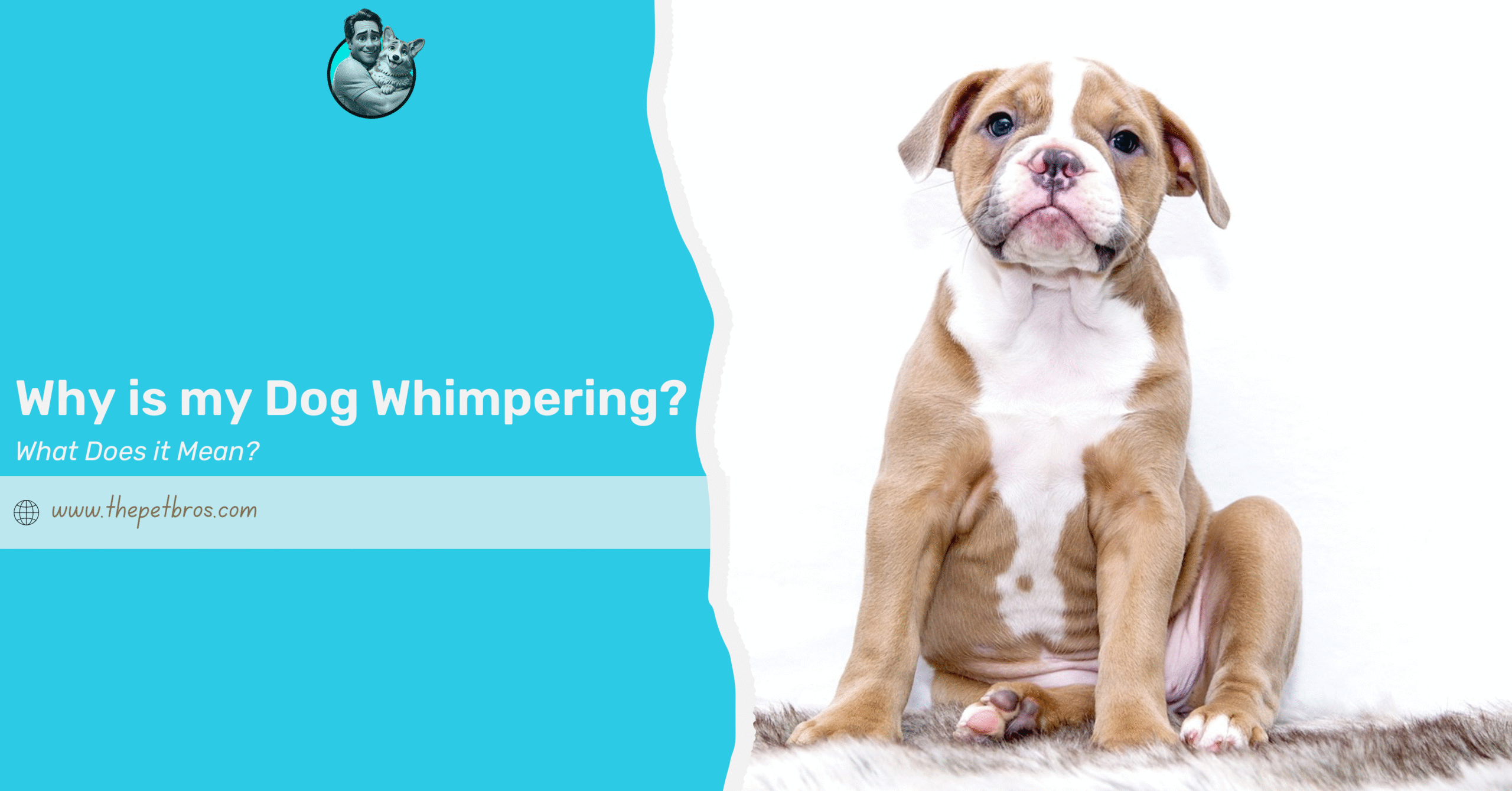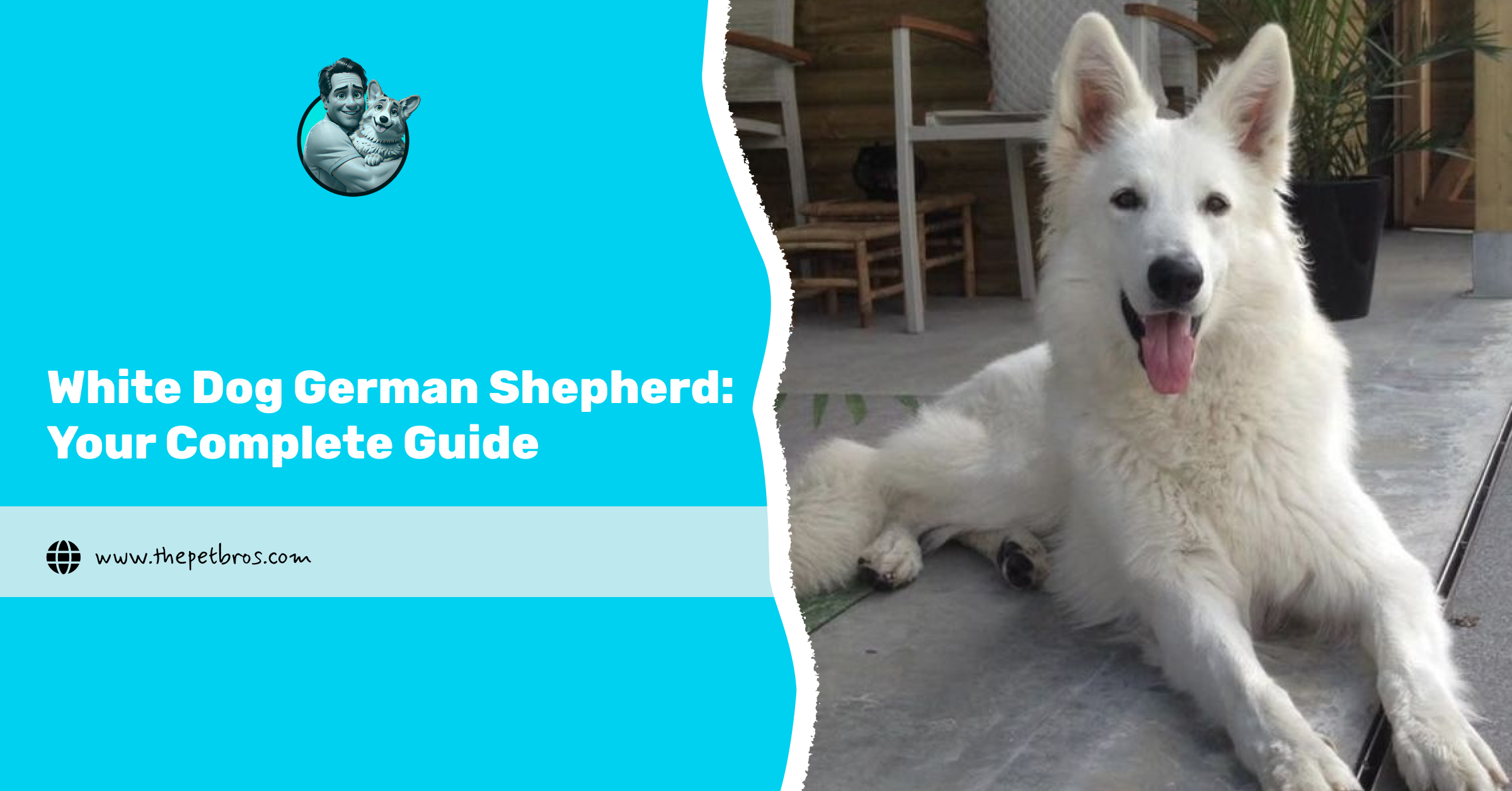Some dogs are loud and proud barkers. Others are drama kings who cry over every little thing. But what about the soft, high-pitched whimpers? That’s a whole different mystery.
Whimpering is subtle. It’s that sound you can barely hear but somehow manages to tug at your heartstrings and keep you up at 2 AM. And the worst part? You don’t always know if it’s serious or just your dog being a little extra.
Before you assume your pup is overly dramatic, it’s worth understanding what that whimper says. More often than not, it’s a sign of something physical, emotional, or behavioural.
So, in this article, we will break down the exact reasons why your dog is whimpering and what you can do when the noise just won’t stop.
Why Exactly Is My Dog Whimpering?
Whimpering tends to signal vulnerability, unlike barking, which is often loud and attention-grabbing. Your dog may whimper for several reasons, ranging from physical discomfort to emotional distress. The most common causes include:
1. Pain or Illness
Simply put, your dog cannot speak and does not know how to inform you that something is wrong. Therefore, its only means of communicating its pain to you is by relying on its subtle vocal cues. Whimpering can help it signal pain from an injury, joint problems, dental issues, or internal conditions.
You may also notice changes in behaviour. If your dog is in pain, it might avoid being touched, struggle to get up, or appear unusually tired. In some cases, the cause may not be visible. Illnesses such as infections, stomach upset, or underlying health conditions can also lead to whimpering.
2. Fear and Anxiety
Your dog may whimper when it feels afraid or anxious. It could be in response to loud noises, unfamiliar people, car rides, or changes in their environment. The behaviour often comes with other signs like trembling legs, pacing, hiding, or restlessness.
Some dogs develop anxiety due to past trauma or lack of exposure during puppyhood. Others may react to specific triggers, such as being left alone for long periods.
If your dog’s whimpering tends to follow predictable patterns, like during fireworks or when you prepare to leave the house, it’s most likely anxiety-related. You can create a calm, stable routine and offer a safe space.
3. They could be Bored or Frustrated
Dogs are active animals that need both mental and physical stimulation. When they do not get enough of either, they may start to whimper out of boredom. An example is when you leave your dog alone for too long without toys or anything to focus on.
Whimpering caused by boredom is usually accompanied by restlessness and pacing. If your dog’s energy is not properly directed, it may also develop destructive habits like digging on beds and couches. To manage this, you should provide consistent engagement through walks or interactive toys.
4. Excitement or Overstimulation
Not all whimpering is a sign of distress. Some dogs whimper when they are overwhelmed with excitement. This could happen when your dog finally sees you after a long time of being alone, and then you show up again to increase the happiness by grabbing the lead for a walk or preparing their food. Best believe your dog is overjoyed.
You’ll see that this type of whimpering is paired with jumping, spinning, or rapid tail wagging. It is a way for it to release built-up energy because it cannot fully contain their enthusiasm. Here, there is no cause for alarm because this type of vocalisation is usually harmless.
5. They May Be Trying to Apologise
On some days after doing something they know is wrong and getting scolded for it, your dog might whimper as a way of showing submission or attempting to make peace. This behaviour is usually accompanied by body language such as lowered ears, a tucked tail, or avoiding eye contact.
Whimpering in this context is not a sign of pain or fear but rather a social response. It is your dog’s way of saying they understand the correction and want to restore peace.
You don’t need to encourage more submissive behaviour than necessary. The best way to respond is to remain calm and avoid prolonging the moment, reassuring them with gentle redirection.
6. Cognitive Decline
If you have an older dog, whimpering may be linked to age-related cognitive changes. As your dog grows older, it can experience confusion, memory loss, or disorientation, just like in humans.
So your older dog may whimper without a clear reason, especially at night or in unfamiliar environments. You might also notice signs like aimless wandering, staring at walls, or disrupted sleep patterns. While cognitive decline cannot be reversed, it can be managed with support.
7. Learned Behaviour
Sometimes, whimpering becomes a habit because it has worked in the past. If your dog learns that whining leads to attention, treats, or being let outside, they may continue the behaviour even when there is no real need.
It is a learned response to specific outcomes. Dogs are quick to make connections between their actions and your reactions.
To reduce this behaviour, avoid rewarding the whimpering directly. Wait for a moment of calm before offering what they want, and reinforce quiet, relaxed behaviour instead. With consistency, your dog can learn that being quiet is more effective than making noise.
6 Helpful Actions to Take When Your Dog Starts Whimpering
Understanding why your dog is whimpering is the first step. The next is knowing how to respond in a way that supports its well-being and encourages more settled behaviour. Let’s see the actions that can help you address the underlying cause and guide your dog toward feeling calmer and more secure.
- Check Their Physical Needs: Start with the basics. Ensure your dog has access to water, has eaten recently, and has had a chance to relieve themselves. Whimpering often signals an unmet need, and addressing it quickly can stop the behaviour before it becomes more persistent. If your dog continues to whimper despite meeting all their basic needs, it is now time to consider other causes.
- Observe triggers and patterns: Pay attention to when and where your dog tends to whimper. Does it happen at specific times of the day, in certain environments, or during particular activities? For example, note if your dog hates socialising. Tracking these patterns can help you identify the cause. Noticing consistent triggers allows you to make small changes that prevent or reduce future episodes. It also gives your vet or trainer clearer information if professional help is needed.
- Avoid reinforcing the behavior: It’s natural to want to comfort your dog when they whimper, but doing so at the wrong moment can unintentionally reward the behaviour. If your dog learns that whining always leads to attention or treats, they may continue to do it even without a real need. Instead, wait for a moment of quiet before offering comfort or rewards.
- Provide enrichment and stimulation: Daily walks, interactive toys, and short training sessions can help release excess energy and keep your dog engaged. A well-stimulated dog is often more relaxed and less likely to rely on whimpering to pass the time.
- Calm stressful situations: If your dog is whimpering due to stress or anxiety, creating a calm environment can make a difference. This might include setting up a quiet space, maintaining a consistent routine, or using calming aids such as familiar toys or soothing sounds. Reducing stimulation and staying calm yourself can help your dog feel more secure, especially during known stress triggers.
- Consult your vet when unsure: If your dog’s whimpering is sudden, persistent, or paired with other changes in behaviour, it’s important to seek professional advice. A vet can help rule out medical issues or guide you towards behaviour support if needed.
How Can You Prevent Your Dog From Whimpering?
While some whimpering is natural, especially in certain situations, consistent patterns can often be reduced or avoided with the right habits. These strategies focus on building confidence, maintaining comfort, and encouraging calm behaviour over time.
- Early socialisation: Introducing your dog to various people, environments, and experiences from a young age helps build their confidence. Well-socialised dogs are less likely to develop anxiety or fear-based behaviours that lead to whimpering. Gradual exposure to everyday situations while they’re young can make a lasting difference.
- Care adjustments for older dogs: As dogs age, their needs change. Cognitive decline, joint pain, and general discomfort can all lead to increased whimpering. Adjusting their routine to include softer bedding, easier access to food and water, and regular vet check-ups can improve their comfort.
- Training and desensitisation: Consistent training helps your dog understand what behaviour is expected and which responses are not rewarded. Teaching calm commands and gradually exposing your dog to stressful triggers in a controlled way can reduce anxiety-driven whimpering over time. You’ll need to exercise a lot of patience for desensitisation, but it helps your dog build confidence in situations that once felt overwhelming.
- Consistency and emotional safety: Dogs thrive on routine and clear communication. When your responses are consistent, they know what to expect, which helps reduce uncertainty and stress. Creating a stable environment where your dog feels safe, understood, and supported goes a long way in preventing unnecessary vocalisation. Emotional security is as important as physical care in helping your dog feel calm and content.
Conclusion
You know that your dog’s Whimpering is quiet, but what you should pay more attention to is that it carries meaning. Whether it points to discomfort, emotion, or habit, it’s your dog’s way of expressing something they cannot put into words. Observing their behaviour, meeting their needs, and responding calmly, you can help reduce unnecessary whimpering and strengthen the bond you share.
Frequently Asked Questions
How do I know if it’s pain or emotion?
Look at the body language. Pain is often linked to physical changes like limping or sensitivity to touch, while emotional causes tend to follow specific triggers.
Can I train my dog to stop whimpering?
Consistent training can reduce unnecessary whimpering. Some dogs may always be slightly more vocal, but most respond well to calm reinforcement.
Is whimpering always a bad sign?
Not necessarily. Some dogs whimper when excited or trying to communicate a simple need. It becomes a concern when it’s excessive.
Do puppies whimper more than adult dogs?
Yes, puppies are more likely to whimper as they adjust to new surroundings and routines. As they grow and gain confidence, the behaviour usually settles.
Should I ignore my dog when it whimpers?
Only if you’re sure it’s attention-seeking and not linked to discomfort or stress. Ignoring emotional or physical needs can make things worse.














